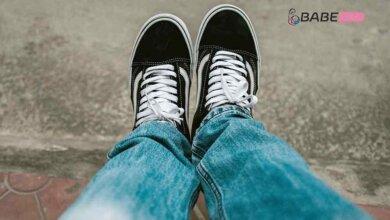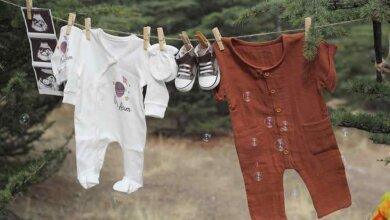Splish, Splash, and Fashion Dash: A Complete Guide to Baby Boy Swimwear for 0-3 Months

Introduction to
Baby boy swimwear 0-3 months
- The importance of swimwear for infants
- Factors to consider when buying swimwear for baby boys
- The significance of age-appropriate swimwear
Baby boy swimwear is more than just a stylish fashion statement; it plays a crucial role in ensuring the comfort and safety of your little one while enjoying water activities. When choosing swimwear for your baby boy, there are several factors to consider, such as functionality, comfort, and sun protection. Additionally, it is important to select swimwear that is appropriate for their age, as the needs of a newborn may differ from those of a three-month-old infant.
Best Fabric Choices for Baby Boys’ Swimwear
- Soft and breathable materials for sensitive baby skin
- UV-protective fabrics for sun safety
- Quick-drying materials for comfort
For baby boys’ swimwear, it is essential to choose fabrics that are gentle on their delicate skin. Opt for soft and breathable materials to minimize irritation and ensure optimal comfort. Additionally, considering the vulnerability of their skin to harmful UV rays, selecting swimwear made from UV-protective fabrics is crucial to shield them from the sun’s harmful effects. Furthermore, quick-drying materials help prevent discomfort caused by prolonged moisture exposure and maintain your baby’s dryness throughout the day.
Styles and Designs of Baby Boy Swimwear
One-piece swimwear options
- Benefits of one-piece swimwear for newborns
- Enhanced coverage and protection
- Ease of dressing and changing
- Various one-piece designs for baby boys
- Rash guard suits for added sun protection
- Adorable printed and patterned options
One-piece swimwear options prove to be an excellent choice for newborns. The design offers enhanced coverage and protection, keeping your baby’s sensitive skin shielded from the elements. Additionally, these suits allow for easy dressing and changing, ensuring convenience for parents. There is a wide variety of one-piece swimwear designs for baby boys, including rash guards, suits that provide additional sun protection, and trendy printed or patterned options to add a touch of style to your little one’s poolside ensemble.
Two-piece swimwear options
- Advantages of two-piece swimwear for infants
- Versatility and ease of movement
- Convenient diaper changes
- Different styles of two-piece swimwear
- Swim trunks with matching tops
- Boardshorts and tankini sets
Two-piece swimwear options offer versatility and ease of movement for active little ones. For infants, these suits often feature bottoms with an elastic waistband for a secure yet comfortable fit. The separate top allows for easy diaper changes without the need to remove the entire suit. Popular styles of two-piece swimwear for baby boys include swim trunks with matching tops and board shorts paired with tankini-style tops, offering a stylish and functional choice for your little swimmer.
Sizing Guide for Baby Boy Swimwear (0-3 Months)
- Importance of the correct fit for baby’s comfort
- Understanding the sizing standards for infants
- Tips for measuring a baby’s body for accurate sizing
Selecting the right size of swimwear is crucial to ensure your baby boy’s comfort during water activities. Ill-fitting swimwear can cause discomfort and restrict movement. Understanding the sizing standards for infant swimwear will help you choose the appropriate size for your little one. To achieve accurate sizing, consider measuring your baby’s body, including its waist, chest, and height, and refer to size charts provided by swimwear brands for an optimal fit that allows freedom of movement and comfort.
Swim Diapers: A Must-Have for Baby Boys
- The role of swim diapers in preventing accidents
- Choosing the right swim diaper material and style
- Key considerations for proper swim diaper usage
When it comes to water activities, swim diapers are essential for preventing accidents and maintaining a hygienic environment. These specialized diapers are designed to contain solid waste while allowing liquid to pass through. It is important to choose swim diapers made from high-quality, leak-proof materials that do not swell or become heavy when wet. Additionally, selecting a style that fits securely yet comfortably around your baby’s waist is crucial to prevent any mishaps during swim time.
Sun Protection for Baby Boys in Swimwear
- The significance of sun protection for infants’ delicate skin
- Swimwear features to look for in terms of sun protection
- Supplemental sun protection measures for complete safety
Protecting your baby boy’s delicate skin from the sun’s harmful rays is of utmost importance. When selecting swimwear, look for features such as UPF (Ultraviolet Protection Factor) ratings and fabrics that provide enhanced sun protection. UPF swimwear helps block harmful UV rays, ensuring your baby’s skin remains shielded. However, it is important to note that swimwear alone may not provide complete sun protection, and you should consider additional measures such as applying sunscreen, seeking shade, and utilizing protective accessories like hats and sunglasses.
Baby Boy Swimwear Accessories
- Protective headwear options for sun safety
- Swimming aids and flotation devices for infants
- Stylish and functional footwear for beach and pool
Alongside swimwear, various accessories can enhance your baby boy’s swimming experience while ensuring their safety. Protective headwear, such as wide-brimmed hats or swim caps, provide added sun protection for their delicate scalp and face. Additionally, there are swimming aids and flotation devices designed specifically for infants to assist them in the water while ensuring their safety. Stylish and functional footwear, such as water shoes or sandals, can protect their tiny feet from hot sand or rocky pool areas.
Essential Factors for Easy Maintenance of Baby Boy Swimwear
- Washing and drying instructions for different swimwear materials
- Stain removal tips for swimwear
- Storage and organization ideas for baby swimwear
Proper maintenance of baby boy swimwear not only ensures its longevity but also keeps it hygienic and safe for your little one. Different swimwear materials may require specific washing and drying instructions to maintain their quality and shape. It is important to pay attention to these instructions to prevent damage or color fading. In case of stains, follow recommended stain removal tips suitable for the fabric. Proper storage and organization ideas, such as using breathable bags or dedicated swimwear compartments, can help keep your baby’s swimwear easily accessible and in good condition.
Popular Brands for Baby Boy Swimwear (0-3 months)
- Overview of reputable and baby-friendly swimwear brands
- Reviews and features of top-selling brands and their swimwear lines
- Factors to consider when selecting a brand for baby’s swimwear
When it comes to selecting baby boy swimwear for 0-3 months, trusted and reputable brands can offer peace of mind in terms of quality, safety, and design. Familiarize yourself with well-established brands that cater specifically to infants, ensuring their swimwear lines prioritize comfort, durability, and functionality. Reviews and features of top-selling brands can provide valuable insights. Factors to consider when selecting a brand include material quality, sun protection features, sizing options, and overall customer satisfaction.
Safety Precautions for Baby Boys in the Water
- Necessary baby-proofing measures in and around water bodies
- Supervision guidelines for swimming with baby boys
- Common water-related risks and how to mitigate them
Safety should always be a top priority when it comes to water activities with baby boys. Baby-proofing measures, such as securing pools and water bodies, ensuring appropriate barriers, and removing potential hazards, are crucial to prevent accidents. Adequate supervision guidelines must be followed at all times when swimming with baby boys, even in shallow water. Being aware of common water-related risks, such as drowning, sunburns, and dehydration, and taking appropriate preventive measures can guarantee a safe and enjoyable swimming experience for your little one.
Transitioning to Swim Lessons for Baby Boys
- Appropriate age to start swim lessons
- Benefits of early swim lessons for infants
- Finding a qualified swim instructor for baby boys
Swim lessons can provide numerous benefits for baby boys, including water safety skills, development of coordination and muscle strength, and increased comfort and confidence in the water. While the appropriate age to start swim lessons may vary, it is generally recommended to introduce infants to water activities from around six months of age. Consider finding a qualified swim instructor who specializes in working with infants and possesses the necessary skills and experience to create a safe and engaging learning environment for your baby boy.
Traveling with Baby Boys and Swimwear Essentials
- Packing checklist for baby boys’ swimwear during trips
- Tips for ensuring baby’s comfort during travel
- Recommendations for on-the-go swimwear care
Traveling with baby boys requires proper planning and consideration of their swimwear needs. Create a packing checklist that includes sufficient swimwear options to cater to various water activities. Consider the duration of your trip and pack accordingly. Ensure your baby’s comfort during travel by choosing swimwear that allows ease of movement and provides adequate protection from the sun. Additionally, bring necessary accessories such as swim diapers, sunscreen, and spare towels. Implement on-the-go swimwear care practices, such as rinsing swimwear after use and air drying when traveling.
Summary of Key Considerations for Baby Boy Swimwear (0-3 months)
- Choosing appropriate swimwear for your baby boy based on age, comfort, and sun protection
- Understanding the importance of swim diapers in maintaining a hygienic environment
- Prioritizing sun protection features in swimwear and supplementing with other protective measures
- Ensuring proper fit and maintaining baby swimwear to prolong its lifespan
- Exploring popular brands and considering factors like material quality and customer reviews
- Taking necessary safety precautions in and around water bodies
- Considering swim lessons as a beneficial activity for baby boys
- Planning and packing swimwear essentials for travel with baby boys
By providing valuable information on choosing, maintaining, and ensuring safety in baby boy swimwear for newborns to three-month-old infants, this article aims to guide parents in making informed decisions and ensuring the best swimwear experience for their little ones.
FAQs
Here are answers to some commonly asked questions about baby boy swimwear:
Can I use regular diapers instead of swim diapers?
While regular diapers can absorb liquid, they are not designed for use in water and may become heavy, uncomfortable, and lose their effectiveness. Swim diapers are specifically designed to contain solid waste while allowing liquid to pass through. Using swim diapers ensures a more hygienic environment while your baby enjoys water activities.
How often should I wash baby boy’s swimwear?
The frequency of washing baby boy swimwear 0-3 months depends on how frequently it is used. Generally, it is a good practice to rinse the swimwear with fresh water after each use and air dry it. If the swimwear becomes visibly dirty or has been exposed to chlorinated water, it should be washed with a gentle detergent as recommended by the manufacturer.
Is it safe to apply sunscreen on a newborn’s skin?
It is generally not advisable to use sunscreen on newborns under six months old. Instead, it is recommended to keep them in the shade and dress them in sun-protective clothing. Consult with your pediatrician before applying sunscreen on your newborn’s skin.
How do I check if a swimwear brand meets safety standards?
To ensure swimwear brands meet safety standards, look for certifications such as UPF (Ultraviolet Protection Factor) ratings, which indicate the level of sun protection offered by the fabric. Additionally, always choose reputable brands that prioritize safety and quality, and refer to customer reviews and ratings for further assurance.






